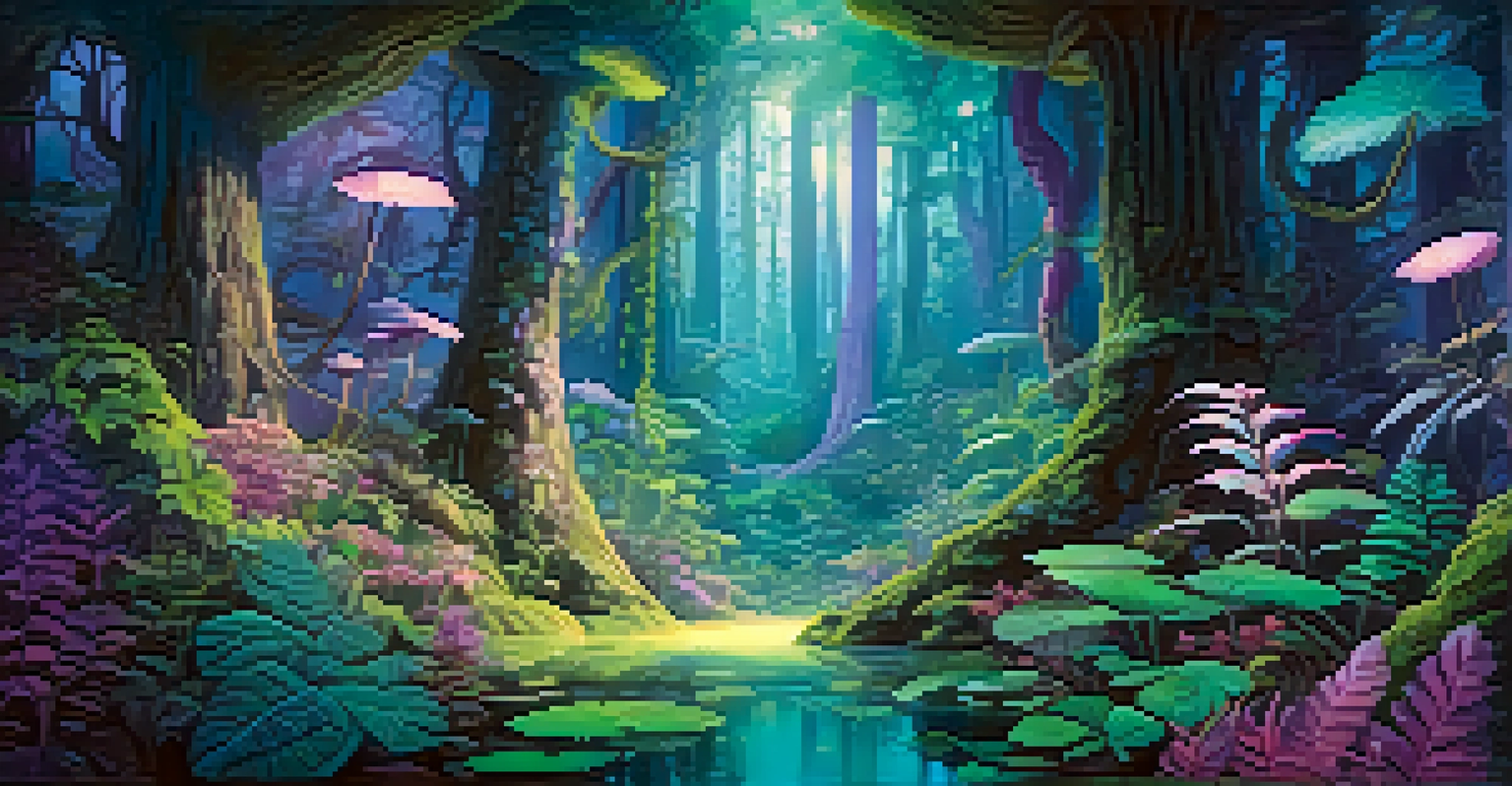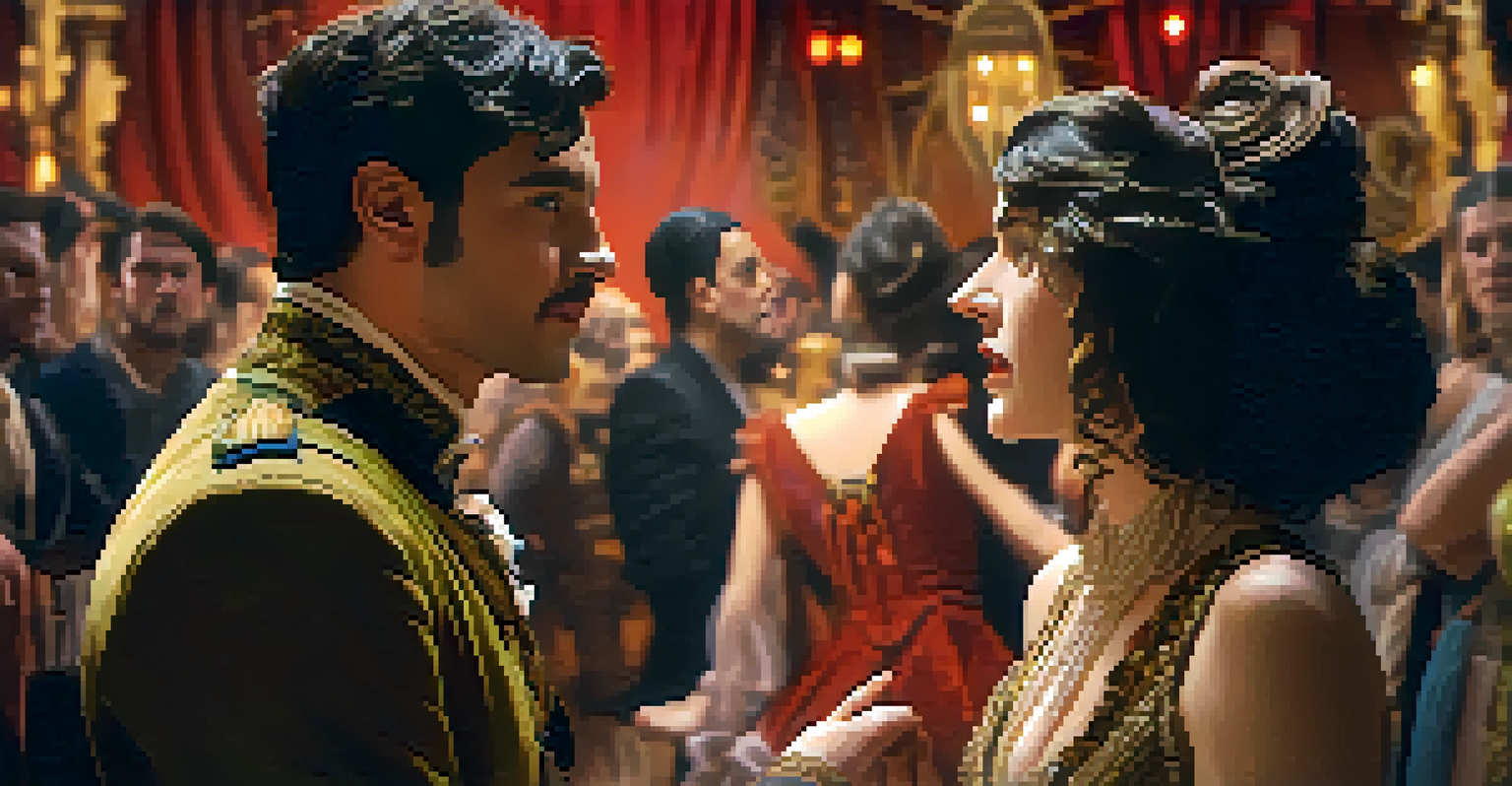Immersive Theater: A New Era of Audience Engagement and Fun

What is Immersive Theater and Why Does It Matter?
Immersive theater is an innovative form of performance that breaks the traditional barrier between the audience and the actors. Instead of sitting passively in a seat, audience members are invited to engage with the story, often moving through different spaces and interacting with performers. This shift not only enhances the viewing experience but also fosters a deeper emotional connection to the narrative.
Theater is a place where we go to feel something, a place where we can escape reality and immerse ourselves in different worlds.
One of the key elements of immersive theater is its ability to make the audience feel like active participants in the story. Imagine walking through a fantastical world where every corner has a new scene unfolding, and you can choose which storyline to follow. This level of engagement can transform a simple play into a memorable adventure, allowing for a unique experience with each visit.
Moreover, immersive theater challenges the conventional norms of storytelling. By blurring the lines between performance and reality, it encourages creativity and exploration, making it a captivating alternative for those seeking fresh and engaging entertainment options.
The Evolution of Theater: From Traditional to Immersive
Theater has always been an evolving art form, but the rise of immersive experiences marks a significant departure from traditional practices. Traditionally, audiences observed the action from a fixed point, but immersive theater invites them to step into the narrative. This evolution reflects broader shifts in technology and culture, where audiences crave more personalized and interactive experiences.

In recent years, productions like 'Sleep No More' in New York have set the stage for this trend, allowing viewers to wander through elaborate sets and engage with the story at their own pace. Such experiences have sparked a wave of similar productions worldwide, each adding its own twist to the immersive concept. This shift has opened the door for diverse storytelling methods that resonate with modern audiences.
Immersive Theater Engages Audiences
This innovative form of performance invites audience members to actively participate in the story, creating a deeper emotional connection.
As immersive theater continues to grow, it also raises interesting questions about the future of traditional stage performances. Will we see a blending of the two forms, or will immersive experiences become the new standard? Regardless, it's clear that the evolution of theater is far from over.
Creating a Memorable Experience: Key Elements of Immersive Theater
Creating an impactful immersive theater experience involves several key elements: engaging storytelling, captivating environments, and interactive components. The narrative must resonate with the audience, allowing them to see themselves in the characters and situations. This connection is crucial for making the experience both relatable and memorable.
The best theater is a conversation between performers and the audience, where both parties leave changed.
The physical space is equally important; elaborate sets and attention to detail transport the audience into a different world. Imagine walking into a 1920s speakeasy, where the ambiance, costumes, and music all work together to create an immersive experience. Such environments enhance the storytelling and encourage participants to explore and interact with their surroundings.
Lastly, interaction is what sets immersive theater apart. Whether it’s choosing which character to follow or engaging in dialogue with performers, the audience’s involvement makes each experience unique. This level of interactivity empowers viewers and fosters a lasting connection to the performance, making it much more than just a show.
The Role of Technology in Enhancing Immersive Theater
Technology plays a crucial role in elevating immersive theater experiences, bringing stories to life in ways that were once unimaginable. From virtual reality to sophisticated sound design, modern productions leverage various technological tools to create a fully realized world. For instance, immersive soundscapes can make audiences feel as though they are truly part of the action, enhancing the overall atmosphere.
Furthermore, digital projections and augmented reality can add layers to storytelling that traditional theater simply can't achieve. Imagine a scene where the walls of a room come alive with visuals that reflect the characters' emotions or memories. Such innovations not only captivate the audience but also push the boundaries of creativity in theater.
Technology Enhances Storytelling
Modern productions leverage tech like virtual reality and sound design to create fully realized worlds that captivate audiences.
As technology continues to evolve, so too will the possibilities for immersive theater. This ongoing integration of tech ensures that each production can offer something fresh and exciting, keeping audiences returning for more unique experiences.
Audience Engagement: Building Community Through Immersive Theater
One of the remarkable aspects of immersive theater is its ability to foster a sense of community among audience members. Unlike traditional theater, where individuals may feel isolated, immersive experiences encourage social interaction and shared reactions. This collective engagement creates a vibrant atmosphere, allowing participants to bond over their unique experiences.
As audiences navigate the performance together, they often share laughter, gasps, and discussions, enhancing the overall enjoyment. For many, this communal experience turns a simple night out into a memorable event, sparking conversations that continue long after the curtain falls. The shared emotional journey can transform strangers into friends, creating lasting connections.
Moreover, many immersive theater productions encourage audience participation in ways that deepen these connections. By inviting viewers to contribute to the narrative, they feel more invested in the outcome, further cementing their bond with fellow participants. This sense of community is one of the many reasons why immersive theater resonates so strongly in today's entertainment landscape.
Challenges Facing the Immersive Theater Movement
While the rise of immersive theater is exciting, it also comes with its own set of challenges. One significant hurdle is the need for a larger budget and resources to create the elaborate sets and technology that define immersive experiences. Many smaller theater companies may struggle to compete with the grand spectacles that larger productions can offer, potentially limiting accessibility.
Additionally, the interactive nature of immersive theater can be daunting for some audience members. Not everyone is comfortable stepping out of their comfort zone to engage with performers or make choices that affect the narrative. This can lead to a divide between those who thrive in immersive settings and those who prefer a more traditional viewing experience.
Community Building Through Experiences
Immersive theater fosters social interaction among participants, transforming individual experiences into shared journeys that build connections.
Lastly, the demand for fresh and innovative content in immersive theater is constant. As audiences become more accustomed to the format, creators must continuously evolve and push boundaries to keep their interest piqued. Balancing creativity with practicality is a challenge that will shape the future of the immersive theater movement.
The Future of Immersive Theater: Trends to Watch
As we look ahead, several trends are emerging in the world of immersive theater that are worth keeping an eye on. One notable trend is the growing emphasis on inclusivity and diversity in storytelling. Productions are increasingly exploring narratives from various cultural perspectives, allowing for richer and more varied experiences that resonate with broader audiences.
Additionally, the fusion of different art forms within immersive theater is becoming more common. Collaborations with visual artists, musicians, and even culinary experts can create multi-sensory experiences that engage audiences on multiple levels. This blending of mediums opens up exciting possibilities for creativity and innovation in the field.

Lastly, as audiences continue to seek meaningful experiences, immersive theater is likely to play a significant role in shaping future entertainment. By prioritizing engagement, emotional connection, and community, this form of theater is poised to thrive in the years to come, capturing the hearts of audiences around the world.